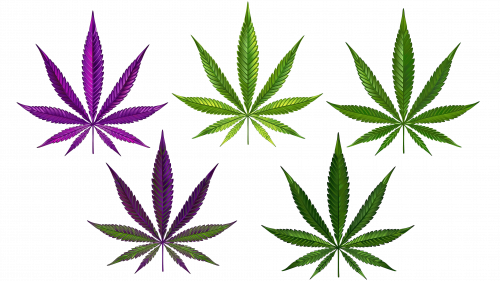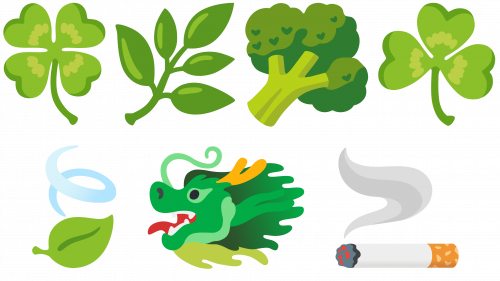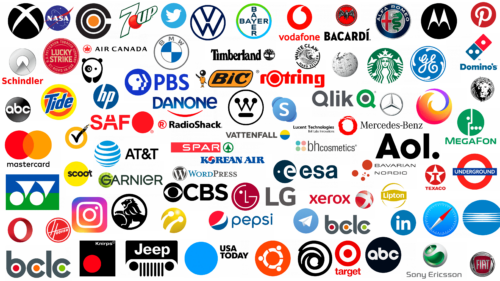Many people on the internet are wondering why there is no emoji for Weed. The reason we still don’t have a weed emoji is because marijuana is not legal everywhere. In the US, for example, it’s only legal in some places, and at the federal level, it’s not legal at all. So until marijuana becomes more widely accepted and legal, it’s unlikely we’ll see an official “weed” emoji.
Every time someone has tried to get the “weed” emoji created, their request has been denied. But things are constantly changing, and who knows? Maybe in the future, when laws and attitudes change, we will still see the “weed” emoji or “weed plant emoji.”
For now, people are getting creative and using other emojis to talk about Weed as a kind of code. Here are some of the emoji they are using:
- Due to its visual resemblance, the 🥦 (broccoli) emoji is sometimes used as a stand-in for weed. This emoji offers a fun and clever way to reference marijuana without using explicit imagery or words.
- The 🌿 (twig) emoji is used to symbolize weed because it represents a plant, drawing a parallel to the plant nature of marijuana. This usage underscores the adaptability of emojis to represent broader categories of items or concepts.
- The ☘️ (trefoil) and 🍀 (four-leaf clover) emojis are occasionally used in reference to weed, perhaps because of their green color and natural appearance, similar to marijuana leaves. These emojis provide a subtle way to hint at weed, using symbols associated with nature and greenery.
- The 🍃 (leaves in the wind) emoji, depicting green leaves, is another symbol that can be interpreted as a reference to weed. Its association with plants and the natural world makes it a suitable, albeit indirect, representation of marijuana.
- The 🐲 (dragon’s head) emoji is a more unconventional choice. Still, it is sometimes used in the context of weed, possibly because smoking marijuana is metaphorically likened to breathing fire like a dragon.
- The 🚬 (cigarette) emoji, representing smoking, is also used to indicate weed, especially since marijuana is often consumed in a manner similar to smoking cigarettes.
So, even though there is no official weed emoji, people are pretty clever at finding ways to talk about it using other emoji. The key is to get creative and have a little fun with the images we use in chats and messages.
Meaning and use of the Weed emoji
In the emoji world, people get very creative, especially when it comes to things like marijuana, which doesn’t have its own official emoji. To get their point across, people use a wide variety of emojis depending on who they are communicating with and how well they understand each other. Let’s take a look at some emojis that are commonly used in place of weed emojis.
🥦 Broccoli emoji: It may seem funny, but this emoji is often used to refer to an herb. The color and shape can resemble hemp leaves if you squint a bit. It’s all about the green color and the leaves.
The 🌿 (green twig) emoji is another example of how emojis are repurposed to symbolize marijuana in digital communication. Its association with marijuana stems from its appearance as a green plant, aligning with the general visual representation of cannabis. Users often pair the 🌿 emoji with others like 🚬 (cigarette) and 💨 (smoke) to reinforce the intended meaning. This combination provides a clearer context, suggesting the act of smoking marijuana. The cigarette emoji implies the method of consumption, while the smoke emoji visually represents the act of smoking, creating a more explicit depiction of marijuana use.
The ☘️ (clover leaf) emoji, commonly associated with Ireland and St. Patrick’s Day, is another example of how emojis are repurposed in digital communication for meanings beyond their traditional associations. In the context of discussing marijuana, some people use the clover leaf emoji as a symbol for “grass,” another colloquial term for marijuana. This usage is primarily due to the emoji’s green color and leafy appearance, which can be seen as analogous to the physical characteristics of cannabis leaves.
The 🍀 (four-leaf clover) emoji, traditionally a symbol of good luck and fortune due to its rarity in nature, also finds an alternative use in digital communication. Similar to the ☘️ (clover leaf) emoji, the four-leaf clover is sometimes employed as a symbol for herbs, including marijuana, in the context of texting or online conversations.
The 🍃 (Leaf Fluttering) emoji, typically representing leaves blowing in the wind, is yet another example of the creative and symbolic use of emojis in digital communication, particularly in the context of representing marijuana. Although not as directly associated with cannabis as some other emojis, the Leaf Fluttering emoji is still employed to subtly hint at it, especially when context and additional emojis are considered.
The 🐲 (Dragon Head) emoji, while primarily representing a mythical creature, has found a unique place in the symbolic language of emojis related to marijuana. In conversations about marijuana, the green dragon head emoji can symbolize the act of smoking cannabis, possibly alluding to the imagery of exhaling smoke, much like a dragon breathing fire. To provide clearer context and ensure the intended meaning is understood, users often pair the dragon head emoji with other symbols such as 💨 (smoke) or 🍁 (maple leaf), the latter being a more commonly recognized representation of marijuana.
The 🚬 (Cigarette) emoji, straightforward in its representation of smoking, is a commonly used symbol in the context of marijuana discussions, particularly in the absence of a specific “weed smoke” emoji. Its primary association with smoking makes it an obvious choice for conversations related to smoking in general. To specify that the context is marijuana smoking rather than tobacco, users often pair the cigarette emoji with one of the various green plant emojis. For example, combining 🚬 with emojis like 🍁 (maple leaf), 🍀 (four-leaf clover), or 🌿 (green twig) helps to convey that the conversation pertains to cannabis.
So, while there is no official “weed” emoji yet, people are getting creative with the emoji they have. They mix and match different symbols, creating a sort of secret code to get their message across. This is a great example of how people are using emojis to communicate creatively.
Final thoughts
There is no specific “weed” (cannabis) emoji in the standard set of emoji. However, people often use different emojis to refer to cannabis or allude to it, depending on context and creativity. Here are some of the most popular ones:
- 🌿 – Herb Emoji: Often used to refer to plants or herbs in general, and sometimes to refer to cannabis because of its green, leafy appearance.
- 🍁 – Maple Leaf Emoji: Especially popular in Canada (where cannabis is legal), maple leaf is sometimes used to refer to marijuana because of its color.
- 💨 – Dashing Away Emoji: Represents smoke or a trickle of air and can be used to refer to smoking in a general sense.
- 🟢 – Green Circle Emoji: The color green is often associated with cannabis, so this simple green circle can sometimes be used in a cannabis-related context.
- 😶🌫️ – “Face in the Clouds” emoji: This emoji depicting a face surrounded by clouds can be interpreted as a face in a hazy or “high” state and is sometimes used in contexts related to cannabis use.
The use of emojis to imply cannabis in digital communication is a prime example of how context, innuendo, and mutual understanding shape the interpretation of these symbols. Since none of the emojis are explicitly intended to represent marijuana, their meaning in this context relies heavily on the subtext of the conversation and the understanding between the sender and recipient. The interpretation can vary widely, influenced by cultural norms, context, and even the legal status of cannabis in different regions.
The creation and modification of emojis are overseen by the Unicode Consortium, a group responsible for standardizing and adding new emojis to the global digital lexicon. The process of introducing a new emoji is quite intricate and involves a detailed application. Applicants must justify the need for the new emoji, provide a proposed design, and often wait up to two years for the emoji to be reviewed and potentially added. With up to seventy new emojis added each year, the range of expression continues to expand.
While there is currently no dedicated emoji for marijuana, it’s possible that one could be introduced in the future if it meets the criteria set by the Unicode Consortium. People adapt and repurpose existing resources to convey their intended messages, demonstrating the flexibility and creativity inherent in emoji usage. While the future might hold a specific “weed” emoji, for now, these alternative emojis provide a playful and clever means to discuss cannabis in digital conversations.




